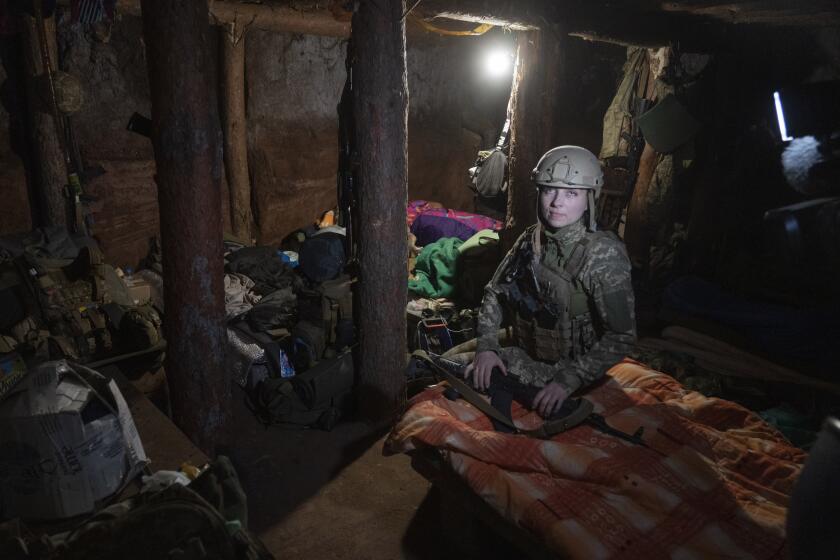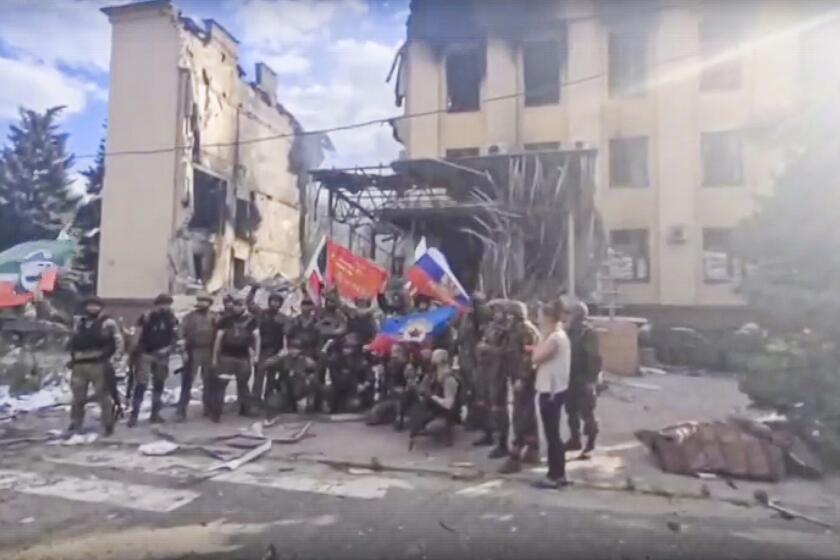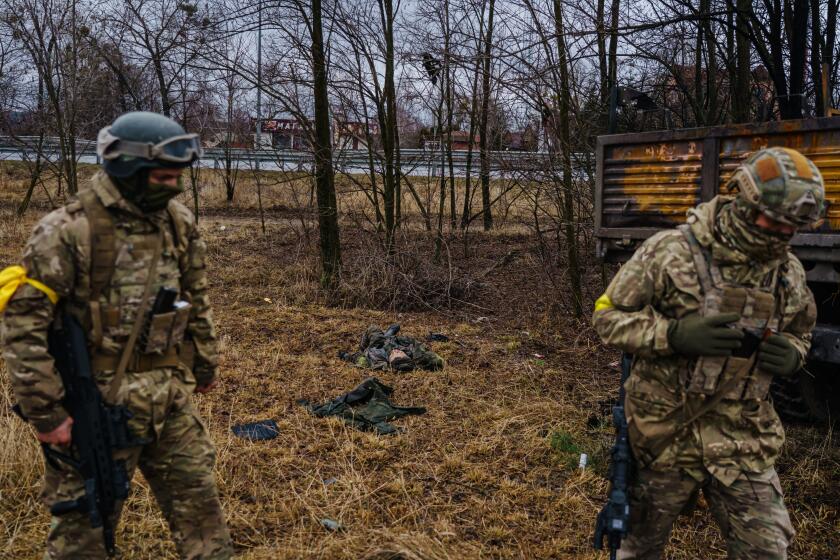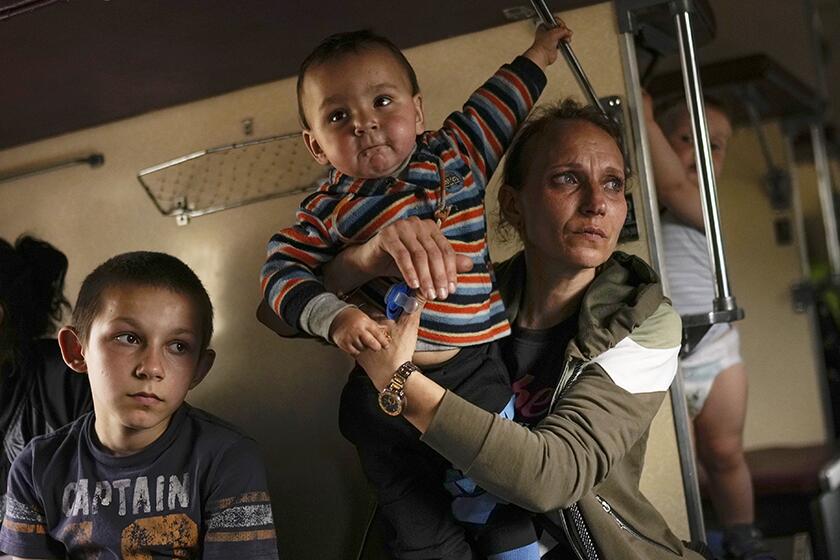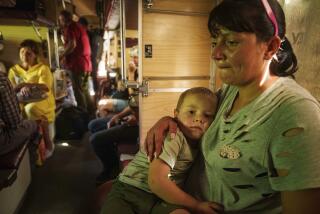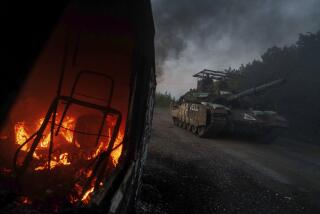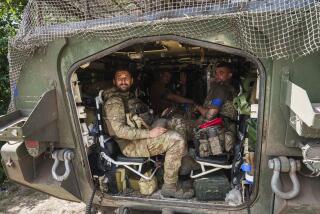Ukrainian governor urges evacuation of 350,000 residents
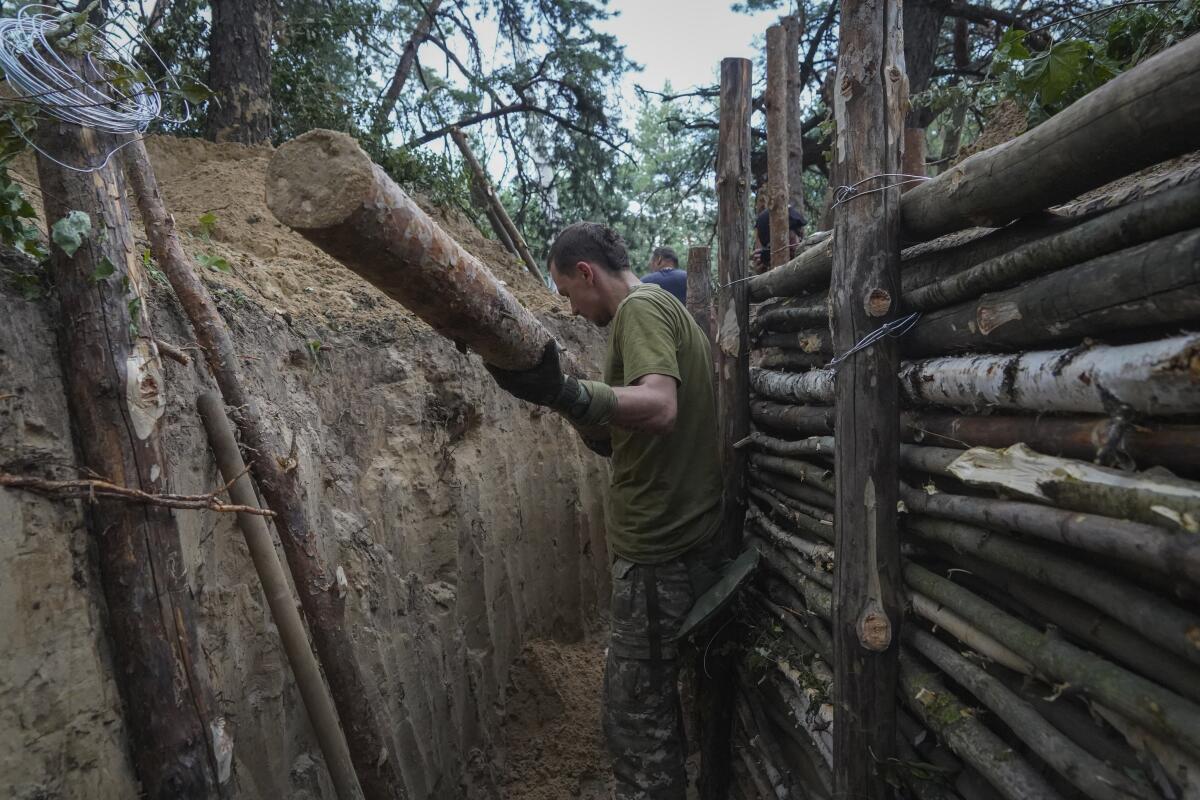
KRAMATORSK, Ukraine ‚ÄĒ The governor of the last remaining eastern province partly under Ukraine‚Äôs control urged his more than 350,000 residents to flee as Russia escalated its offensive and air alerts were issued across nearly the entire country.
Gov. Pavlo Kyrylenko said that getting people out of Donetsk province is necessary to save lives and to enable the Ukrainian army to better defend towns from the Russian advance.
‚ÄúThe destiny of the whole country will be decided by the Donetsk region,‚ÄĚ Kyrylenko told reporters in Kramatorsk, the province‚Äôs administrative center and home to the Ukrainian military‚Äôs regional headquarters.
‚ÄúOnce there are less people, we will be able to concentrate more on our enemy and perform our main tasks,‚ÄĚ Kyrylenko said.
The governor’s call for residents to leave appeared to represent one of the biggest suggested evacuations of the war, although it’s unclear whether people will be willing and safely able to flee. According to the U.N. refugee agency, more than 7.1 million Ukrainians are estimated to be displaced within Ukraine, and more than 4.8 million refugees left the country since Russia’s invasion started Feb. 24.
Ukrainian President Volodymyr Zelensky said air alerts were issued Tuesday night in nearly all of the country, in many places after a long period of relative calm during which people searched for an explanation.
‚ÄúYou should not look for logic in the actions of terrorists,‚ÄĚ Zelensky said in his nightly video address. ‚ÄúThe Russian army does not take any breaks. It has one task ‚ÄĒ to take people‚Äôs lives, to intimidate people ‚ÄĒ so that even a few days without an air alarm already feel like part of the terror.‚ÄĚ
Putin’s declaration came as Russian forces tried to press their offensive deeper into eastern Ukraine after the Ukrainian military confirmed that its forces had withdrawn from Lysychansk.
Much of the military activity appeared concentrated in Ukraine‚Äôs east. The Kramatorsk governor said that because they house critical infrastructure such as water filtration plants, Russia‚Äôs main targets are now his city and a city 10 miles to the north, Slovyansk. Kyrylenko described the shelling as ‚Äúvery chaotic‚ÄĚ without ‚Äúa specific target ... only to destroy civilian infrastructure and residential areas.‚ÄĚ
Slovyansk also came under sustained bombardment Tuesday. Mayor Vadym Lyakh said on Facebook that ‚Äúmassive shelling‚ÄĚ pummeled Slovyansk, which had a population of about 107,000 before Russia invaded Ukraine. The mayor, who urged residents hours earlier to evacuate, advised them to take cover in shelters.
At least one person was killed and another seven wounded Tuesday, Lyakh said. He said the city’s central market and several districts came under attack, adding that authorities were assessing the extent of the damage.
The barrage targeting Slovyansk indicated that Russian forces were advancing farther into Ukraine’s Donbas region, a mostly Russian-speaking industrial area where the country’s most experienced soldiers are concentrated.
Moscow’s military victory in Ukraine’s Luhansk province came at a steep price, which has possibly put its strength for a new offensive in doubt.
Slovyansk has previously taken rocket and artillery fire during Russia’s war in Ukraine, but the bombardment picked up in recent days after Moscow took the last major city in neighboring Luhansk province, Lyakh said.
‚ÄúIt‚Äôs important to evacuate as many people as possible,‚ÄĚ he warned Tuesday morning, adding that shelling damaged 40 houses on Monday.
The Ukrainian military withdrew its troops Sunday from the city of Lysychansk to keep them from being surrounded. Russia‚Äôs defense minister and Putin said the city‚Äôs subsequent capture put Moscow in control of all of Luhansk, one of two provinces that make up the Donbas, but the regional governor said Tuesday that fighting was continuing on Lysychansk‚Äės outskirts. He said Russian forces were moving weaponry to Donetsk.
The question now is whether Russia can muster enough strength to complete its seizure of the Donbas by taking Donetsk province too. Putin acknowledged Monday that Russian troops who fought in Luhansk need to ‚Äútake some rest and beef up their combat capability.‚ÄĚ
Russian Defense Minister Sergei Shoigu said Tuesday that Moscow‚Äôs main priorities are ‚Äúpreserving the lives and health‚ÄĚ of the troops, as well as ‚Äúexcluding the threat to the security of civilians.‚ÄĚ
Russia’s war losses in Ukraine are far higher than Moscow admits, analysts believe. But will that spark anti-Putin sentiment?
When Putin ordered the invasion of Ukraine more than four months ago, his stated goals were defending the people of the Donbas against Kyiv‚Äôs alleged aggression, and the ‚Äúdemilitarization‚ÄĚ and ‚Äúdenazification‚ÄĚ
of Ukraine.
Pro-Russia separatists have fought Ukrainian forces and controlled much of the Donbas for eight years. Before the invasion this year, Putin recognized the independence of the two self-proclaimed separatist republics in the region. He also sought to portray the tactics of Ukrainian forces and the government as akin to Nazi Germany’s, claims for which no evidence has emerged.
The General Staff of the Ukrainian military said Russian forces also shelled several Donetsk towns and villages around Slovyansk in the last day but were repelled as they tried to advance toward a town about 12 miles to the city’s north. South of the city, Russian forces were trying to push toward two more towns and shelling areas near Kramatorsk.
Meanwhile, Moscow-installed officials in Ukraine’s southern Kherson region on Tuesday announced the formation of a new regional government, with a former Russian official at the helm.
Civilians who managed to flee eastern Ukraine say intensified shelling over the past week left them unable to even venture out from bomb shelters.
Sergei Yeliseyev, the head of the new Moscow-backed government in Kherson, is a former deputy prime minister of Russia’s western exclave of Kaliningrad and also used to work at Russia’s Federal Security Service, or the FSB, according to media reports.
It wasn‚Äôt immediately clear what would become of the ‚Äúmilitary-civic administration‚ÄĚ the Kremlin installed earlier. The administration‚Äôs head, Vladimir Saldo, said in a Telegram statement that the new government was ‚Äúnot a temporary, not a military, not some kind of interim administration, but a proper governing body.‚ÄĚ
‚ÄúThe fact that not just Kherson residents, but Russian officials too are part of this government speaks clearly about the direction the Kherson region is headed in the future,‚ÄĚ he said. ‚ÄúThis direction is to Russia.‚ÄĚ
Kherson’s Russia-installed administration previously stated plans for the region to become part of Russia, either through a referendum or other means.
There was no immediate comment from Ukrainian officials.
More to Read
Sign up for Essential California
The most important California stories and recommendations in your inbox every morning.
You may occasionally receive promotional content from the Los Angeles Times.
